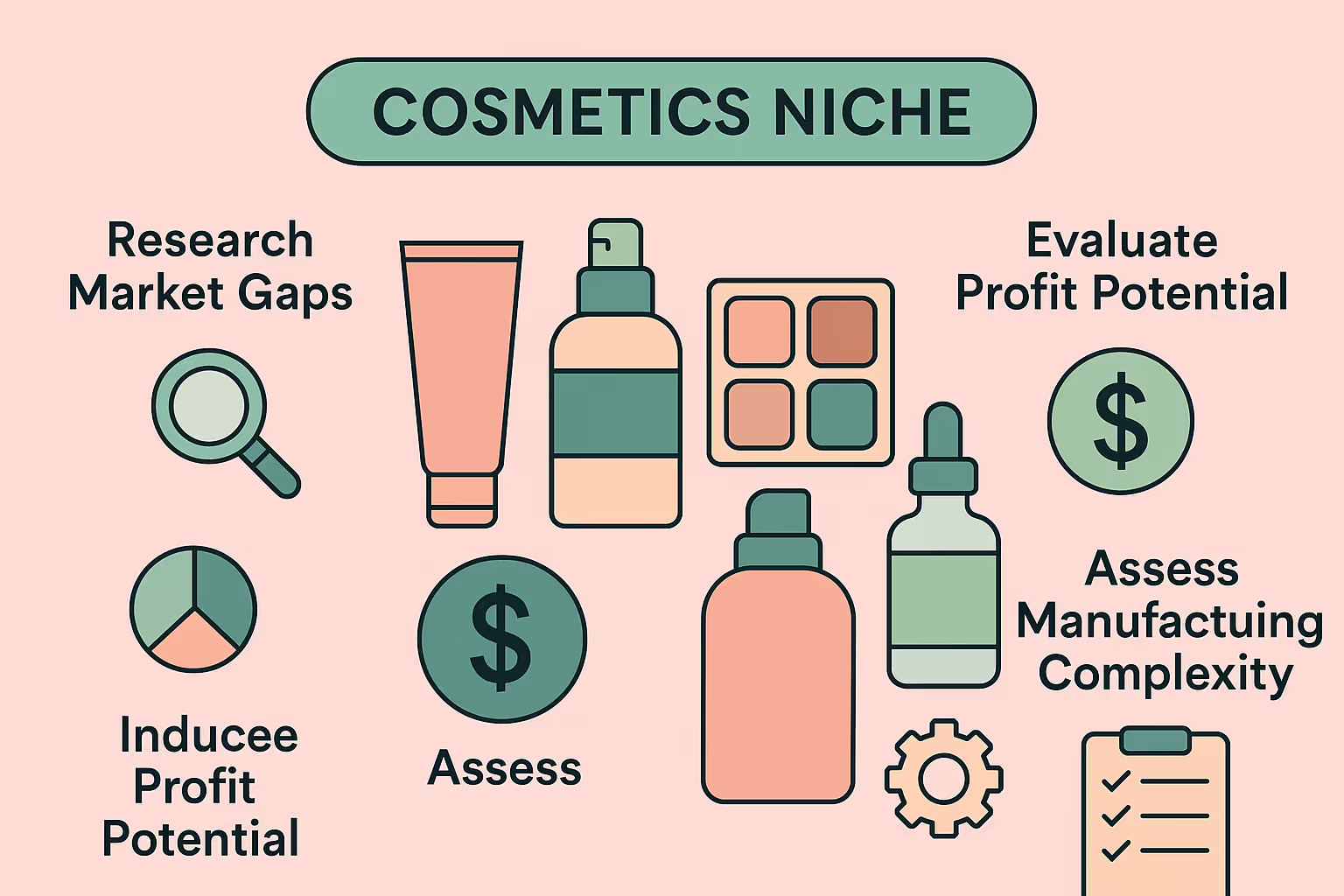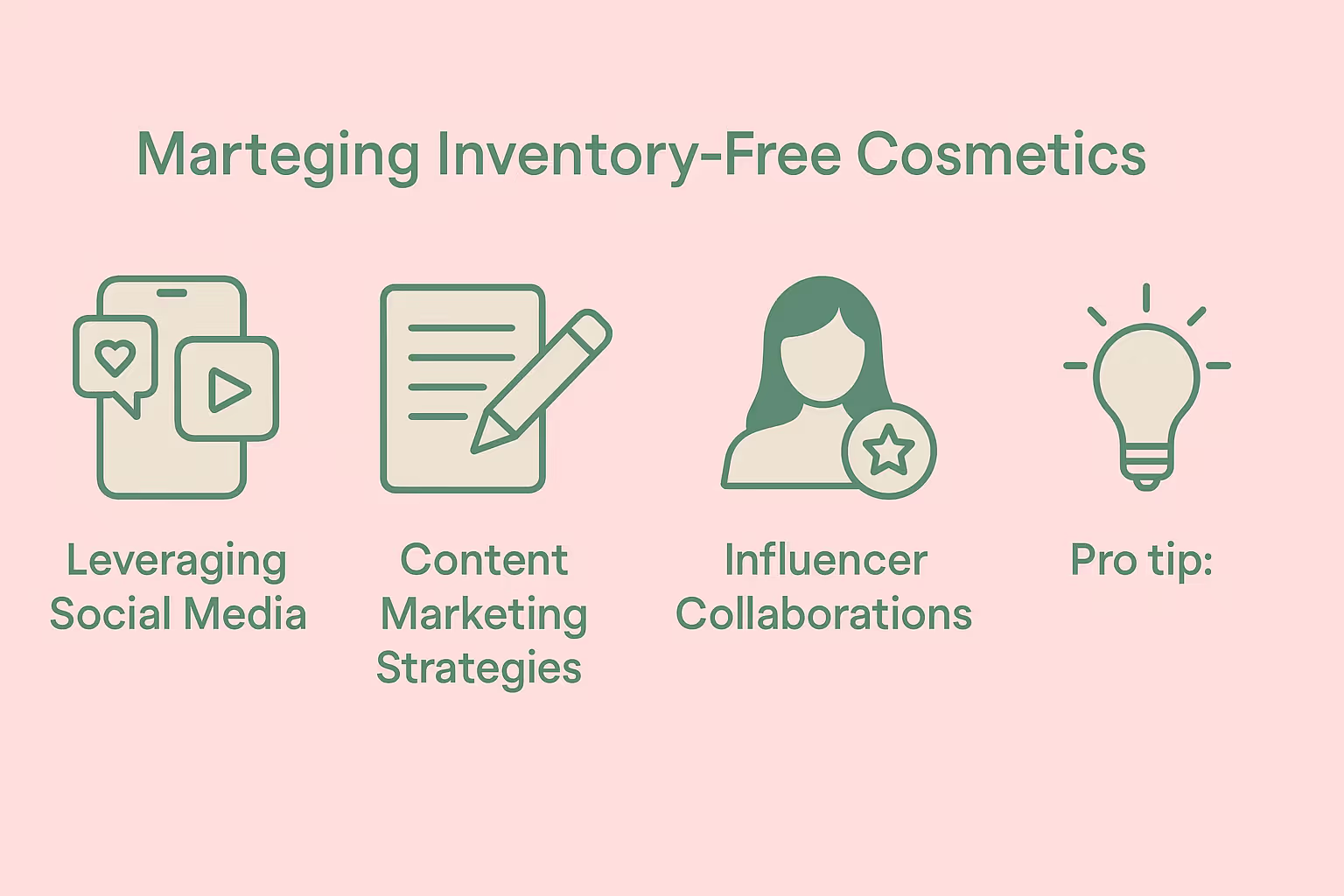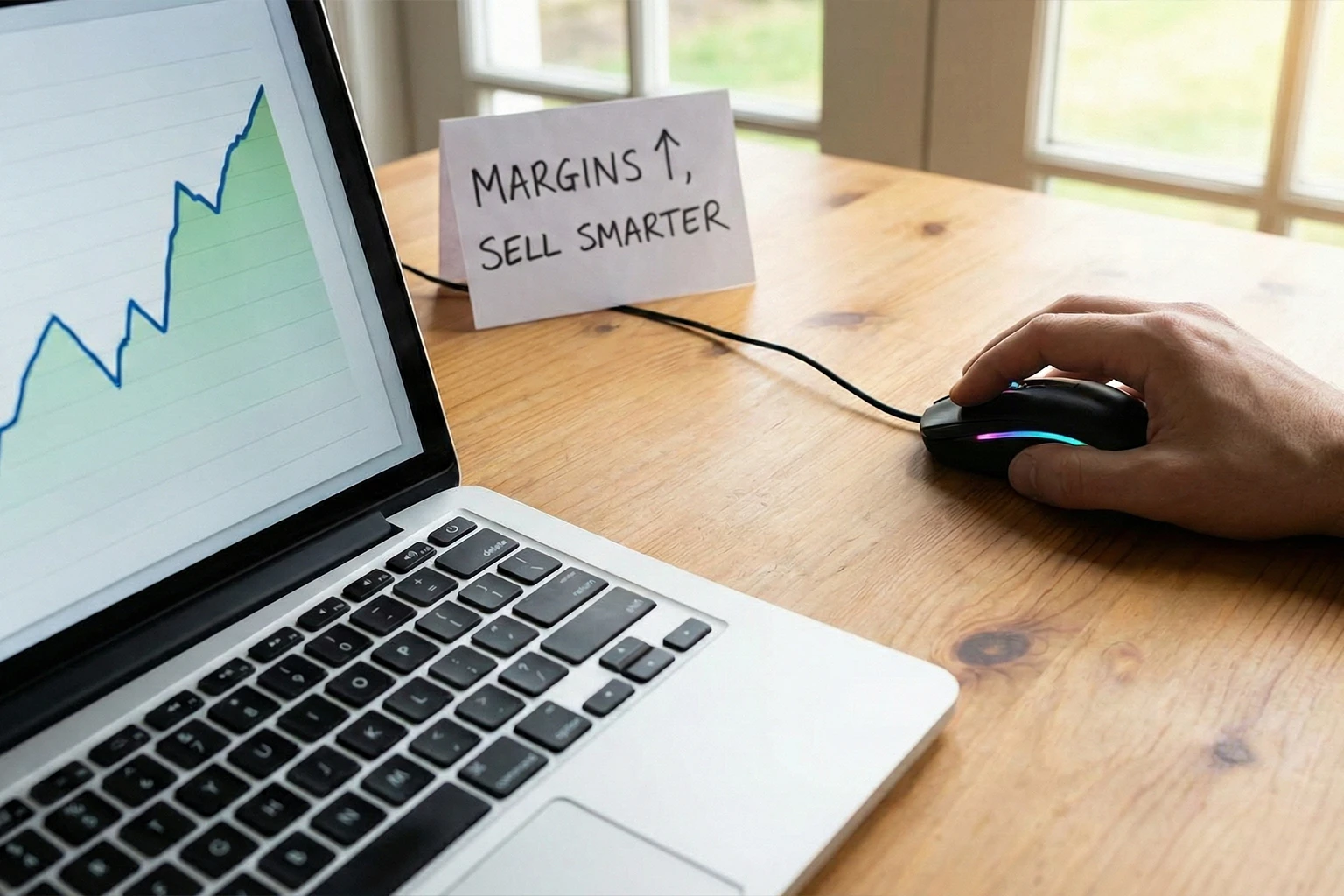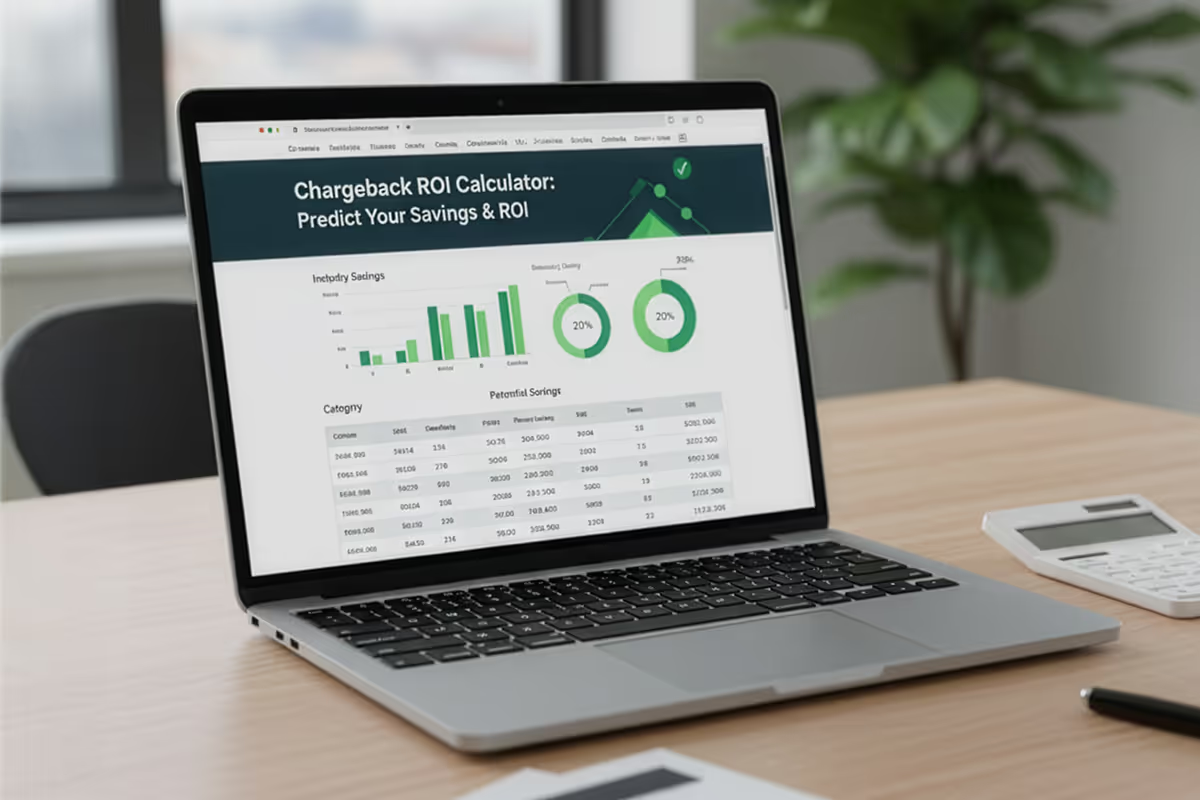
The beauty industry is booming, with the global cosmetics market set to exceed $415 billion by 2028. Thanks to private label and dropshipping, starting a brand is easier than ever.
This model removes high startup costs, storage needs, and complex logistics. It’s a low-risk way to enter a fast-growing space.
Knowing the ins and outs of starting your own cosmetics line with no inventory helps entrepreneurs launch quickly and affordably. With the right partner, even solo founders can build a standout brand in today’s competitive beauty market.
The Process of Starting Your Own Cosmetics Line Without Inventory Explained
Starting a cosmetics line traditionally meant significant upfront investment in product development, manufacturing, packaging, and storage. Today's beauty entrepreneurs have access to inventory-free business models that dramatically reduce these barriers to entry.
The key approaches include:
Private Labeling
Private labeling allows you to partner with established manufacturers who create cosmetic products according to your specifications, but with your brand name and packaging. The products remain stored at the manufacturer's facility until ordered.
Private labeling offers several advantages:
- Control over formulations and ingredients
- Unique brand positioning
- Higher profit margins
- Ability to create a cohesive product line
Many successful beauty brands like Kylie Cosmetics and Glossier started with private label manufacturing before developing their in-house production capabilities.
For a deeper dive into this approach, check out the complete guide to private label cosmetics with step-by-step instructions.
White Labeling
White labeling is similar to private labeling but offers less customization of the actual product formulation. You're essentially putting your branding on pre-existing, market-tested products.
White labeling benefits include:
- Faster time to market
- Lower minimum order quantities
- Proven product quality
- Less complexity in formulation decisions
Print-on-Demand Cosmetics
Some platforms now offer print-on-demand services for beauty products where packaging is custom-printed only after a customer places an order.
While less common than in apparel, this model is gaining traction for products like lip balms, body creams, and gift sets.
Dropshipping Beauty Products
Dropshipping eliminates inventory management by having your supplier ship products directly to customers. You focus solely on marketing and customer acquisition.
Pro tip: While dropshipping offers the lowest barrier to entry, building a sustainable beauty brand requires more control over product quality and customer experience.
Consider starting with dropshipping to validate demand, then transition to private labeling for better brand control and margins.
Think you need $10K to launch a beauty brand? Not anymore. Whether you're building a one-product brand or testing the market with zero stock, this cheat sheet shows which zero-inventory model fits your goals.
How to Select Your Cosmetics Niche

Before launching your inventory-free beauty line, identifying a specific niche is crucial for differentiation in a crowded market.
Research Market Gaps
Analyze current beauty trends and identify underserved customer segments or product categories. Tools like Google Trends, social media listening, and beauty industry reports can reveal emerging opportunities.
Consider these promising cosmetic niches:
- Clean beauty products with transparent ingredient lists
- Inclusive shade ranges for diverse skin tones
- Gender-neutral cosmetics
- Problem-solving products (acne-prone skin, aging concerns)
- Sustainable and eco-friendly beauty solutions
Evaluate Profit Potential
Research the profit margins in different beauty categories. Skincare typically offers higher margins than color cosmetics, while specialty products like serums command premium pricing.
Assess Manufacturing Complexity
Some beauty products are simpler to produce through inventory-free models than others:
- Lip products, body lotions, and bath products – Relatively straightforward
- Basic skincare (cleansers, moisturizers) – Moderate complexity
- Advanced formulations (anti-aging serums, specialized treatments) – Higher complexity
Starting with less complex products allows you to enter the market quickly while building your brand reputation.
Finding the Right Manufacturing Partner
The success of your inventory-free cosmetics line heavily depends on selecting the right manufacturing partner.
Types of Manufacturing Partners
Several options exist for entrepreneurs seeking to launch without inventory:
- Full-service beauty manufacturers - Handle everything from formulation to packaging and fulfillment
- Specialized fulfillment platforms - Connect beauty brands with manufacturers and handle logistics
- Turnkey solution providers - Offer end-to-end services, including compliance and marketing support
Evaluating Potential Partners
When vetting manufacturing partners, consider these critical factors:
- Minimum order requirements - Look for partners with low MOQs or no minimums
- Formulation expertise - Ensure they have experience with your product category
- Regulatory compliance - Verify they adhere to FDA regulations and industry standards
- Customization options - Assess how much you can tailor products to your brand vision
- Lead times - Understand their production and shipping timelines
Quality Control Considerations
Even without managing inventory directly, maintaining product quality remains your responsibility. Establish quality control processes:
- Request samples before committing
- Develop detailed product specifications
- Establish regular quality testing protocols
- Create feedback loops with early customers
Building Your Beauty Brand Identity
A compelling brand identity differentiates your cosmetics line from competitors and justifies premium pricing.
Defining Your Brand Story
Successful beauty brands connect with customers through authentic storytelling. Develop a brand narrative that answers:
- What problem does your beauty line solve?
- What values does your brand represent?
- Who is your ideal customer?
- What makes your approach different?
Creating Visual Brand Elements
Design cohesive visual elements, including:
- Logo and color palette
- Packaging design
- Website aesthetic
- Social media templates
- Product photography style
For beauty products, packaging is particularly crucial as it creates the first tactile impression. Even with an inventory-free model, invest in custom packaging design that elevates the customer experience.
Setting Up Your Online Store
Your e-commerce presence serves as both your storefront and brand showcase.
Choosing the Right E-commerce Platform
Several platforms work well for inventory-free beauty businesses:
- Shopify - Offers seamless integration with fulfillment services and robust beauty-specific apps
- WooCommerce - Provides more customization for WordPress users
- Wix - User-friendly for beginners with built-in design tools
Optimizing Product Pages
Create compelling product pages that:
- Showcase high-quality product images from multiple angles
- Provide detailed ingredient lists and benefits
- Include application instructions and expected results
- Feature customer testimonials and reviews
- Use clear calls-to-action
Setting Up Payment Processing
Implement multiple payment options to reduce cart abandonment:
- Credit cards
- PayPal/digital wallets
- Buy now, pay later options (Afterpay, Klarna)
Marketing Your Inventory-Free Cosmetics Line

Without the burden of inventory management, you can focus more resources on marketing your beauty brand.
Leveraging Social Media
Beauty products thrive on visual platforms:
- Instagram - Create shoppable posts featuring product demonstrations
- TikTok - Develop trend-based content showing products in action
- Pinterest - Share beauty tutorials and ingredient education
- YouTube - Partner with beauty influencers for in-depth reviews
Content Marketing Strategies
Develop content that establishes your expertise:
- Ingredient education articles
- Before/after transformation stories
- Seasonal beauty guides
- Application tutorials
- Skincare routines featuring your products
Influencer Collaborations
Beauty influencers can accelerate brand growth:
- Micro-influencers (10 K- 50 K followers) often deliver higher engagement rates
- Nano-influencers (1 K- 10 K followers) provide authentic word-of-mouth marketing
- Consider product seeding programs rather than paid promotions initially
Pro tip: Instead of pursuing major beauty influencers with high fees, identify emerging creators whose audience demographics match your target customer. Negotiate collaboration packages that include both content creation and promotion for better ROI than one-off sponsored posts.
Scaling Your Beauty Business
Once you've validated your concept, implement these strategies to grow without the constraints of inventory management.
Expanding Your Product Line
Strategically grow your offerings:
- Start with a core collection (3-5 products)
- Add complementary products based on customer feedback
- Develop seasonal or limited-edition items to drive urgency
- Consider beauty subscription options
Optimizing Fulfillment
As order volume increases:
- Negotiate better rates with your manufacturing partner
- Consider multi-location fulfillment to reduce shipping times
- Implement order tracking and proactive communication
- Develop a returns process that maintains customer satisfaction
International Expansion
The inventory-free model facilitates global reach:
- Research international beauty regulations before entering new markets
- Consider localized packaging and marketing
- Evaluate fulfillment partners with international capabilities
- Test demand through global marketplaces before full expansion
Advice from the Experts: Test Hero Product Viability Through Paid Sampling Funnels
Before scaling, top beauty founders quietly validate products using paid sampling funnels. This strategy offers samples for a small fee, covering costs while gauging real demand and feedback. It’s more reliable than free giveaways, and filters for truly interested buyers.
For those exploring how to start their own cosmetics line with no inventory, it’s a smart way to test product-market fit. It also helps refine messaging, pricing, and positioning, all before committing to broader production or paid influencer campaigns.
Turning Your Passion for Beauty into a Thriving Business
Starting a cosmetics line with no inventory is more achievable than ever. With private labeling, strategic partners, and digital marketing, you can build a profitable beauty brand without upfront inventory or logistics hurdles.
Success comes from a clear brand identity, the right manufacturing partner, and strong audience connections. Focus on a niche, streamline your product line, and use social media to share your story.
FAQ
Related blogs

Price Elasticity Of Demand Calculator: Predict Revenue Impact in Seconds

High-Low Method Calculator: Discover Your True Fixed and Variable Costs

Dynamic Pricing Calculator: Optimize Margins and Sell Smarter With Every Click


